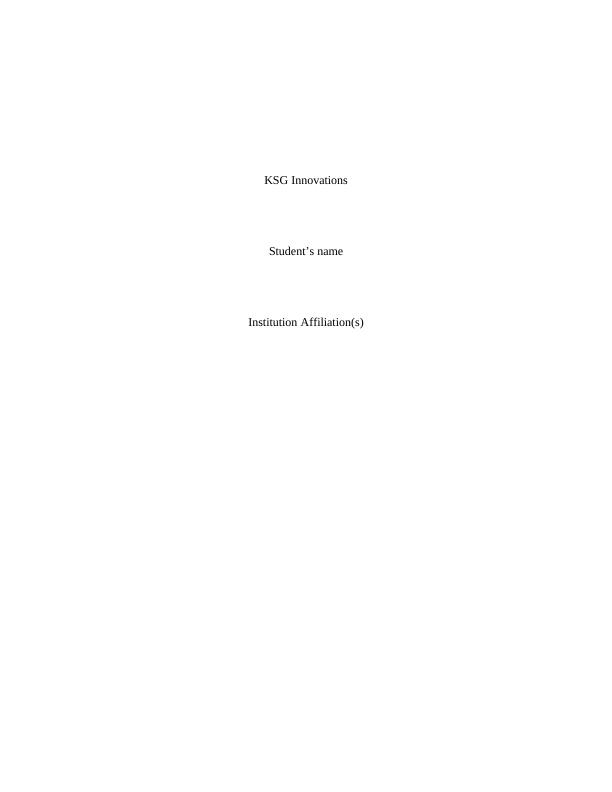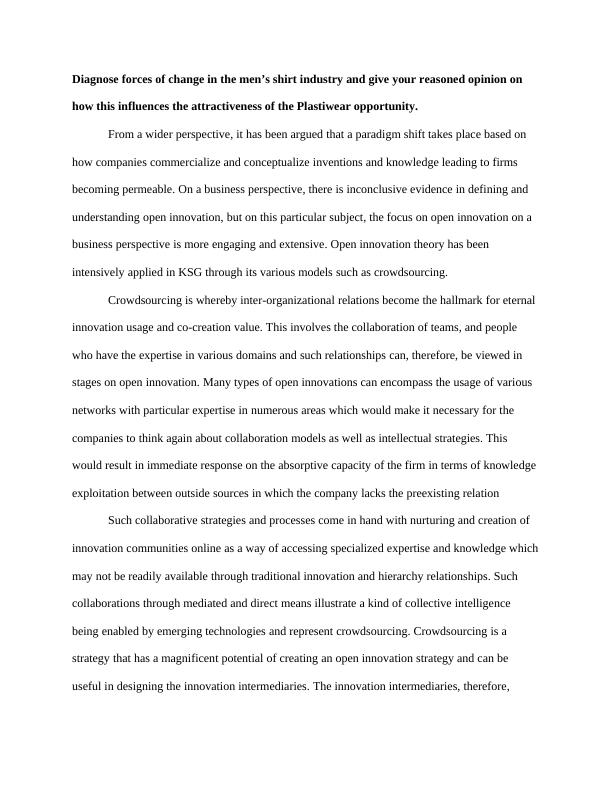KSG Innovations.
New product line potential or pitfall? Shelley Stevens sighed as she realized that she had no hope of catching the 7:10 train tonight. She turned back to the reports she was reviewing at the request of her CEO, Joseph Black. As the chief financial officer of KSG, a large plastics and packaging materials company, Shelley was accustomed to having the occasional internal dispute disrupt her routine. This time it involved an increasingly heated internal debate that Joseph wanted her to help moderate. The good news was that KSG's research-and-development department had stumbled upon a new plastic polymer that was stain-resistant, wrinkle-proof, and virtually indestructible, and yet looked, felt, and draped just like cottona perfect material for making
Added on 2022-12-15
KSG Innovations.
New product line potential or pitfall? Shelley Stevens sighed as she realized that she had no hope of catching the 7:10 train tonight. She turned back to the reports she was reviewing at the request of her CEO, Joseph Black. As the chief financial officer of KSG, a large plastics and packaging materials company, Shelley was accustomed to having the occasional internal dispute disrupt her routine. This time it involved an increasingly heated internal debate that Joseph wanted her to help moderate. The good news was that KSG's research-and-development department had stumbled upon a new plastic polymer that was stain-resistant, wrinkle-proof, and virtually indestructible, and yet looked, felt, and draped just like cottona perfect material for making
Added on 2022-12-15
End of preview
Want to access all the pages? Upload your documents or become a member.



